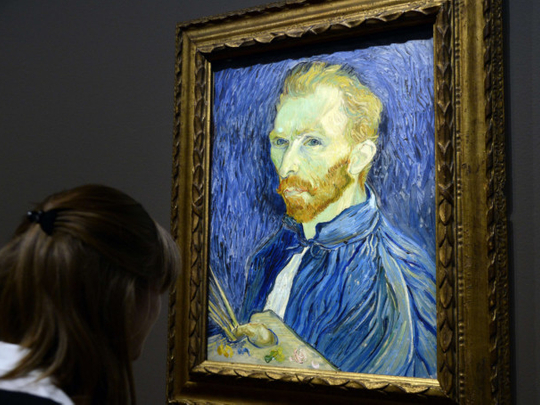
By Tommy Weir, Special to Gulf News
A recent conversation with a friend provoked me and got me thinking about a topic that had long intrigued me — that proverbial fine line that exists between genius and madness. And the possibility that a little bit of both could be hiding in many of us.
“We are all carrying some damaged part of our psyche — after all, we were raised by humans with all their faults,” said my friend. According to her, the damaged bit is often where the force for ideas and creativity lies. The trick is to learn from and harness that damage, rather than be destroyed by it.
Tortured selves
That, in itself, is a fine balancing act to master — and one that some of history’s most prominent thinkers, artists and writers struggled with throughout their lives. Vincent Van Gogh and author Jack Kerouac were both hailed as geniuses, yet both displayed self-destructive behaviour.
Van Gogh famously cut off part of his left ear during a bout of depression, while Kerouac tragically died at the age of 47 from an abdominal haemorrhage brought on by decades of excessive drinking.
Underlying their torture, what the Dutch painter and the American literary icon shared, was one of the most common forms of so-called “madness”: schizophrenia. Kerouac was diagnosed with the disorder during his life, while it was only after his death that many people came to believe that Van Gogh was also a sufferer.
No coincidence
And they are not alone. The schizophrenia hall of fame is packed with top names from science and the arts: the brilliant Russian dancer Vaclav Nijinsky, American poet Sylvia Plath and Nobel Prize-winning mathematician John Nash, to name a few.
Is it a coincidence? Science suggests not.
Researchers at Stockholm’s Karolinska Institute have discovered that the dopamine system in healthy, highly creative people is similar to that found in schizophrenics. The study, penned by Dr. Frederik Ullén and Örjan de Manzano and entitled “Thinking Outside a Less Intact Box”, indicates that certain characteristics, such as being able to make bizarre and unusual associations, are common to both.
This is not to say that every supremely talented individual must also suffer from mental illness. However, society’s fear of difference means that many great minds were never recognised as such during their lifetimes, just as many world-changing ideas seemed preposterous when first proposed: the concepts of Copernicus and Galileo, Einstein’s space-time universe, or Picasso’s geometric paintings.
Acceptance
With the benefit of hindsight, we know the world would be a far poorer place without such people and their ideas. So then, how do we ensure that we embrace difference and recognise genius when we see it? More importantly, how can we nurture it, if indeed that’s possible?
Unsurprisingly, there is no clear answer, though clues lie in the phenomenon that is the child prodigy. Biographies of many geniuses have shown that they were once child prodigies, yet unlike the Mozarts of this world, extraordinarily gifted children often fail to live up to their early promise.
Here, parents play a pivotal role. Nobel Prize-winner and MIT professor, Norbert Weiner was a child prodigy, whose parents recognised his early talents. By contrast, Weiner’s contemporary, Billy Sidis, could read eight languages by the age of six and was admitted to Harvard University at 11, yet his true potential was never realised.
As a result of over-protective parenting, he was an adolescent before he could dress himself and despite an abundance of intellectual stimulation, his family life was an unhappy one.
Like parents to child prodigies, leaders have a role to play in nurturing the talents of their employees and providing an environment where they can grow. Don’t fear difference, embrace it.
Don’t impose copy-paste formulae, listen to new ideas and allow people to experiment. By operating with tolerance and an open mind, you can create an environment where creativity can thrive.
The chances are, not every one of us is a genius in the making — But wouldn’t it be great to find out?
Tommy Weir is CEO of enaible: AI-powered leadership and author of “Leadership Dubai Style”. Contact him at tsw@tommyweir.com.












